Join Mario Matassa for the second instalment in his series uncovering the secrets of Italian food. This time he goes to the sea, where he braves an early morning, much indecision and the fiery Italian passion for all things seafood
Photos by Mario Matassa
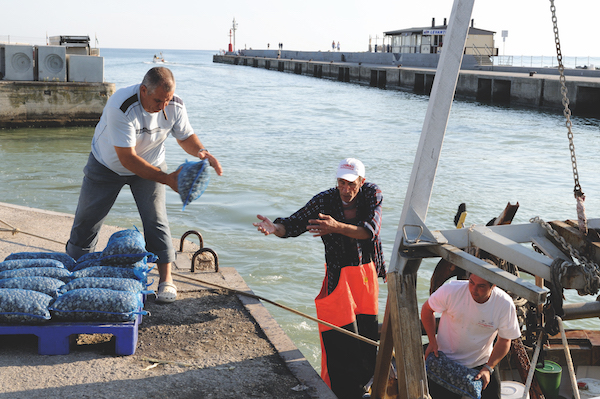
Going on a road trip is something that just happens when an Italian living in the flat, hot, landlocked plains of Emilia gets a sudden craving for fish. It just takes one person to mention the idea on a Thursday night at the bar and, suddenly, you are in a car with three other people, speeding down the motorway to a port in Romagna at 4 o’clock in the morning. This particular occasion was not a first for me, and it won’t be the last. But there really must be an easier way to get a portion of fish. And why does it always entail a pre-dawn wake-up call?
For Italians, fish is the most prized of ingredients. A plate of seafood is always an occasion. So when Gigi, my local barman, mentioned that he could really go for a plate of fresh grilled sardines, the supermarket was never a serious option. Good fish must always be fresh – and it is better still if you can eat it on location.
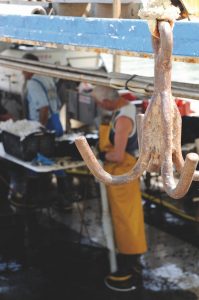 As Gigi did his best to redefine the speed limit, the discussion inevitably turned to matters of the sea. As much as Italians enjoy eating seafood, they also enjoy talking about it. We would arrive at the port by 7am, just in time to see the boats coming in. By 9am, our three freezer boxes would be filled. That would leave us a couple of hours to scour the restaurant billboards for a lunch venue. Gigi was having sardines. Francesco, beside me in the back seat, wanted a fritto misto. Vittorio, up front, was undecided; it was a contest between a grigliata mista and a zuppa di pesce.
As Gigi did his best to redefine the speed limit, the discussion inevitably turned to matters of the sea. As much as Italians enjoy eating seafood, they also enjoy talking about it. We would arrive at the port by 7am, just in time to see the boats coming in. By 9am, our three freezer boxes would be filled. That would leave us a couple of hours to scour the restaurant billboards for a lunch venue. Gigi was having sardines. Francesco, beside me in the back seat, wanted a fritto misto. Vittorio, up front, was undecided; it was a contest between a grigliata mista and a zuppa di pesce.
I mentioned antipasto, which resulted in confusion and agonised indecision. Then when someone mentioned pasta – specifically, “If the pasta is made in house I’m having vongole” – a further tier of choices meant that the conversation carried on all the way to sea. By the time we arrived, the consensus was that we should push the boat out, so to speak, and go the distance: antipasto, primo and secondo.
With more than 7,500km of coastline it’s easy to understand why Italians eat a lot of fish. And the range is staggering. Red and grey mullet, red snapper, scorpion fish, sea urchins, fresh anchovies, carp, grouper, musky octopus, mantis shrimp, razor clams, catfish, sturgeon, dogfish, goby, pike and sea bream are just a few of the less obvious fish that are eaten regularly in Italy. One of the difficulties with this range of choice, no matter how good your Italian might be, lies in translation, as local dialects have different names for fish. But wherever you go, in a good restaurant the catch of the day dictates the menu.
There are restaurants that will spout all manner of seafood, sometimes even out of a packet. Avoid them. Menus will normally have an asterisk to mark the fresh from the frozen, but it’s always a good policy to ask. Likewise, in supermarkets, at the fishmonger’s and in fish markets, fish that has been frozen will be indicated. To be fair however, the quality of the fresh fish sold away from the coast is quite good. Road trips are for fanatics and idle hands that need an excuse for a boys’ day out!
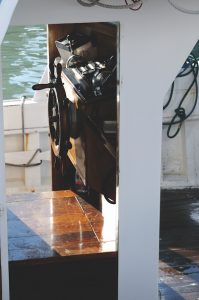 Eating fish in Italy is never as simple as a trip to the fish and chip shop. Whether it’s the result of choice, finding a good restaurant or, in this case, distance, Italians will go to whatever length they deem necessary to make their plate of fish memorable. In fact, the only uncomplicated thing about Italians and fish is in the manner of cooking it. The general rule, as in all things culinary in Italy, is ‘keep it simple’. After all, if you have been to great effort to find the perfect piece of fish, whatever would possess you to smother it in sauce?
Eating fish in Italy is never as simple as a trip to the fish and chip shop. Whether it’s the result of choice, finding a good restaurant or, in this case, distance, Italians will go to whatever length they deem necessary to make their plate of fish memorable. In fact, the only uncomplicated thing about Italians and fish is in the manner of cooking it. The general rule, as in all things culinary in Italy, is ‘keep it simple’. After all, if you have been to great effort to find the perfect piece of fish, whatever would possess you to smother it in sauce?
Back on the docks, we bought several kilos of fresh sardines straight from the fisherman’s net. Gigi also threw in a couple of 5kg sacks of clams from a different fisherman. His mother would cook those for us later that evening. By 11:30am we were sitting in the Marittimo restaurant overlooking the harbour. At that moment, I couldn’t think of a better place to be. The waiter approached and very soon thereafter all the careful planning that had taken place in the car went out of
the window. For the next two hours we ate huge amounts of seafood, and for three hours after that we talked about it all the way home!
Here’s Mario’s pick of Italian seafood classics (and how to make them!)
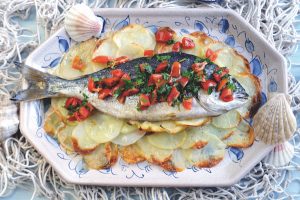
Baked sea bream with potatoes (Orata al forno con patate)
Sea bream, orata, is commonly found along the Adriatic coastline. Whenever Italians are baking, boiling or grilling fish they tend to leave it whole, the prevailing logic dictating that the fish will retain maximum flavour this way. When a fish is filleted, it tends to be fried or cooked with a sauce. A fish cooked in saor (marinated) is a good example. However, another chef once told me that this treatment tends to be reserved for fish that isn’t as fresh, as the taste of the fish comes second to the marinade. Fresh fish should be cooked whole with little seasoning and fresh herbs. Also, he explained, guests prefer fish to be served whole as it adds to the spectacle of the dish.
The variations of recipes for sea bream are countless, depending on where you happen to be. I’ve never eaten it filleted, always whole. I’ve tried it al cartoccio, cooked in a pan whole with tomatoes, and simply grilled over hot coals with herbs. The following dish, baked in an oven with potatoes is a classic version. When I visited my fishmonger, he had two different kinds of sea bream. One was local, fished from the Adriatic coastline and the other was from Greek waters. I opted for the latter version as he assured me it was delicious… And it was!
Click here for Mario’s sea bream with potatoes recipe.
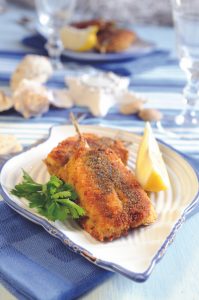
Sicilian stuffed sardines (Sarde a beccafico alla palermitana)
The sardine has always been loved in Italy. It’s delicious, economical and good for you. In southern parts, and especially in Sardinia and Sicily, it’s one of the most popular types of fish. One restaurant I visited recently listed eight different dishes, three of which were sardoncini, sarde and sardoni – little sardines, normal-sized sardines and big sardines. It really depends on how you like your sardines…
Most fish restaurants will have a dish of sardines on the menu – simply grilled; or dusted in flour, fried and served with a wedge of lemon. When you use fresh sardines it’s a dish that’s hard to beat – and it’s my local barman’s favourite. When you’re buying the fish, it’s generally better to opt for whole, as opposed to filleted, sardines. That way, it’s easier to tell if the fish is fresh. (This rule actually applies to all fish.)
The dish that follows is a Sicilian version stuffed with sultanas and pine nuts. You’ll have to remove the head (it’s normally left intact). You don’t need to be too fastidious about the bones. Just take out the main spinal bone and the larger bones will follow. The smaller bones can (and should) be eaten as they’re a very good source of calcium.
Click here for Mario’s Sicilian stuffed sardines recipe.
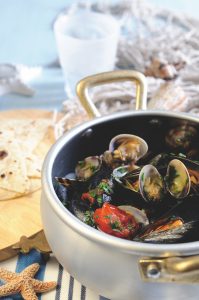
Mussel and clam antipasto (Antipasto di molluschi)
There are many varieties of clams sold in Italy – the vongola gialla, verace, the common vongola (the Venus), to name a few. When I visit Naples, my first port of call is the Trattoria del Tabaccaio for some spaghetti alle cozze e vongole. This is a classic antipasto dish served in most seafood restaurants in Italy. It’s the very definition of simplicity. Light and delicious, it’s a taster of what’s to come.
On the Romagnola coast it’s generally served with piadina, a flat bread. If you can’t get hold of this, some good crusty bread to soak up the juices at the bottom of the pan will be fine. The recipe here uses baby plum tomatoes but I’ve also had it made with tinned tomatoes and with passata, or without tomatoes and just white wine, garlic and parsley. You can even use the same recipe, add a forkful of pasta and it becomes a primo.
Click here for Mario’s mussel and clam antipasto recipe.
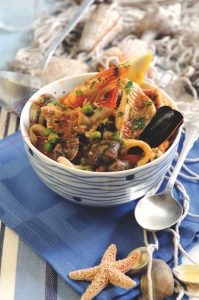
Fish soup (zuppa di pesce)
It’s not to much of an exaggeration to say there that are more variations of fish soup in Italy than there are fish in the sea. With the variety of fish on offer in the country, coupled with regional, provincial and town loyalties, everyone thinks they hold the secret to the best fish soup.
In Sicily, recipes include capers and olives. In Liguria, herbs and pine nuts are often added. In Romagna, peas are often used, and it is made sometimes with tomatoes and sometimes without. People will argue passionately over who makes it the best – I’ve witnessed this often. The truth is there is no secret ingredient, there are no hard-and-fast rules.
My advice is simply to use the best fish available to you – and by that I mean the freshest. You do not have to use shellfish if you don’t want to. The key in the cooking is to add the fish in sequence according to cooking times. Again, depending on the type of fish used, the cooking time will vary – so it does require a little planning and thought on your part. However, although the dish may look elaborate, it’s actually quite simple.
Click here for Mario’s authentic zuppa di pesce recipe.
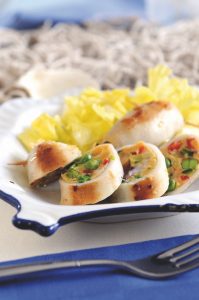
Stuffed squid (calamaro ripieno)
Squid comes in various shapes and sizes. Totani, calamari (long squid), seppie (cuttlefish), seppiolini (tiny cuttlefish), moscardino (musky octopus) and polpo (octopus) are all popular throughout the coastal regions of Italy.
How you should cook your squid is generally dictated by its size. As a rule, with smaller, fresher fish, fry or grill it quickly and it will be meltingly tender. If you cook it for too long it will become chewy. Larger types of squid can be cooked more slowly – if cooked whole in a sauce.
What you stuff your squid with is a good indicator of where you happen to live in the country. This dish is a version of stuffed squid from Emilia – hence the use of egg and cheese, and the cooking in white wine. It can be eaten hot or cold but do remember to trickle a little extra olive oil over the squid just before you sit down.
Click here for Mario’s stuffed squid recipe.
For Vero Italiano part 1 (the authentic Italian classics) click here.
